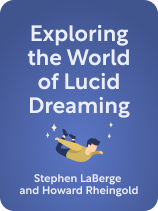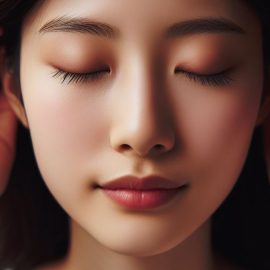

This article is an excerpt from the Shortform book guide to "Exploring the World of Lucid Dreaming" by Stephen LaBerge and Howard Rheingold. Shortform has the world's best summaries and analyses of books you should be reading.
Like this article? Sign up for a free trial here.
How well do you really know yourself? How can you see your ego for what it really is?
The book Exploring the World of Lucid Dreaming says that you can see your true self through lucid dreaming. The authors say that this is possible because lucid dreaming allows you to see yourself beyond your waking ego.
If you want to learn how to understand yourself better, here’s why you should try lucid dreaming.
Better Understand Your Identity
Want to know how to understand yourself better? The authors explain that lucid dreams can help you understand yourself better and develop a healthy relationship with your ego. Your ego, according to the authors, is a part of who you are, but it isn’t all of who you are—it represents aspects of your true nature, much like a written song score represents music but it isn’t the music itself. The authors write that it’s easy for us to mistake our egos for our true selves and to identify with them. But to have a healthy relationship with your ego, you must stop identifying with it.
| What Is Ego, Really? The authors’ definition of ego is close to its original meaning as first defined by psychoanalyst Sigmund Freud, but it isn’t a strictly accurate representation of the initial intent of the word. Freud first defined ego as simply “I” or “self.” His theory proposed that our personalities are made up of three parts: the id, which seeks pleasure and immediate gratification; the superego, which internalizes societal norms and values; and the ego, which mediates between the id’s desires and the superego’s ideas of morality. In recent years, ego has become a widely misused and misunderstood concept, frequently portrayed negatively in spiritual and self-help literature. It’s often seen as a false identity, as our authors define it, or an inflated sense of superiority and a hindrance to personal growth, as it is in Ryan Holiday’s Ego Is the Enemy. However, Freud didn’t see the ego as a mental representation or as inherently negative. He believed you could develop a healthy relationship with your ego by balancing the demands of the id with those of the superego. This allows you to navigate internal and external pressures effectively, leading to a sense of well-being and psychological stability. |
Lucid dreams can help you see your ego for what it is and understand that your true self encompasses more than your ego. The authors explain that when you’re in a lucid dream, you can plainly see that your dream self is not your real self—it’s simply a representation of you that your mind has created in the dream state. Your ego is the same thing in your waking state. When you understand that your ego is just a mental representation, you can more easily work with it, instead of struggling against it, and you’re on your way to better understanding the entirety of who you are.
(Shortform note: Many dream experts agree that your dream self is similar to your ego, not only because it’s a representation of yourself created by your mind, but also because your concerns and struggles in dreams are typically egocentric, revolving around your own experiences and challenges. Jung also saw the dream self as a representation of the self, but he felt it was different from the ego, writing that the dream self symbolizes the unconscious aspects of your mind. He believed that by exploring and understanding your dream self, you can gain insights into your unconscious desires, fears, and motivations, leading to personal growth and self-awareness.)

———End of Preview———
Like what you just read? Read the rest of the world's best book summary and analysis of Stephen LaBerge and Howard Rheingold's "Exploring the World of Lucid Dreaming" at Shortform.
Here's what you'll find in our full Exploring the World of Lucid Dreaming summary:
- Ways to prepare for lucid dreaming
- How to purposefully “wake up” in your dreams
- The many ways lucid dreaming can improve your waking life






